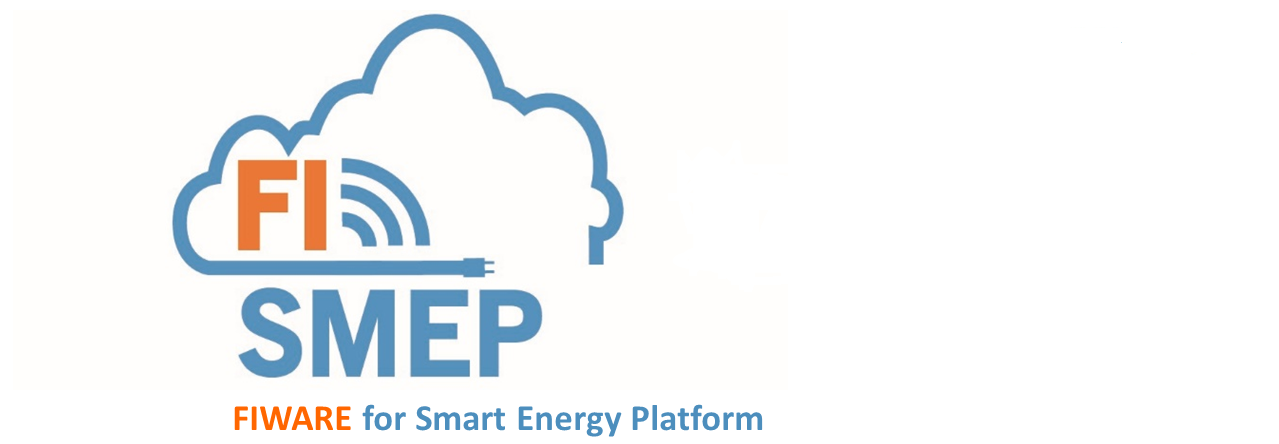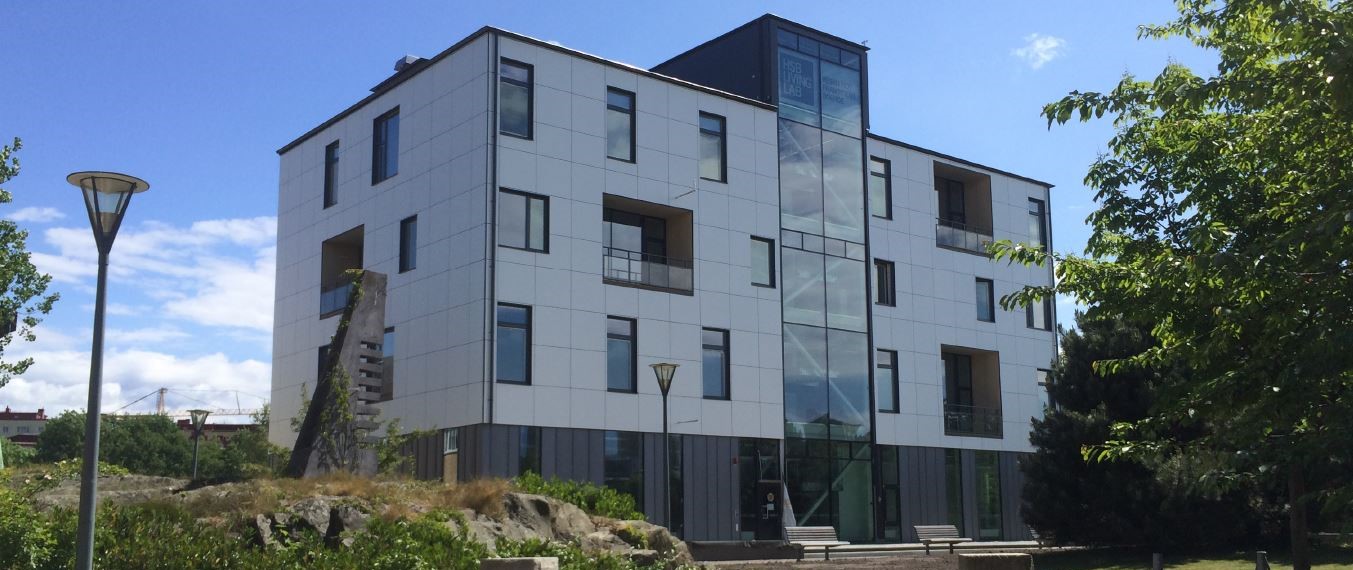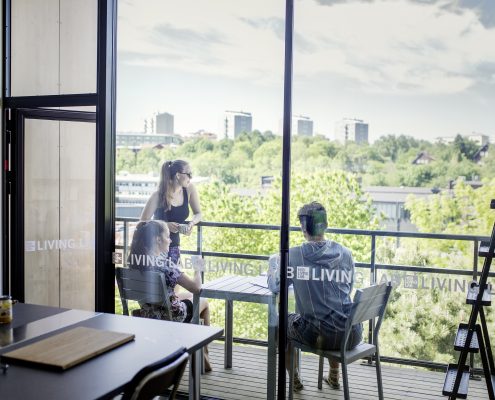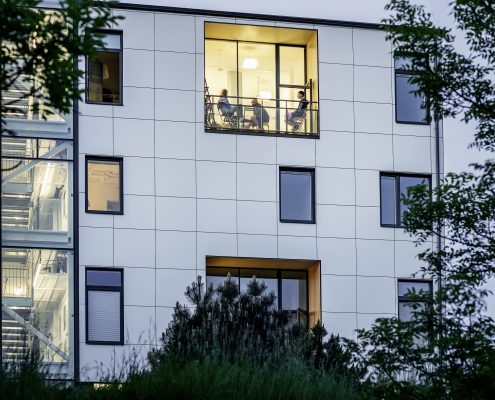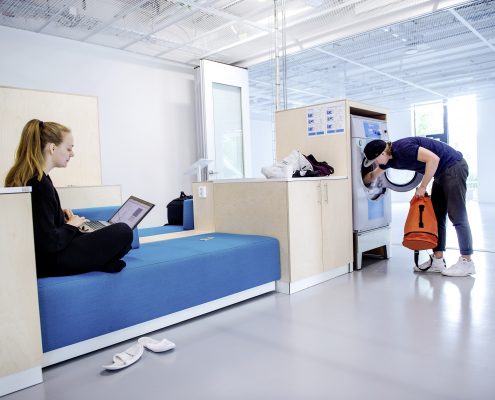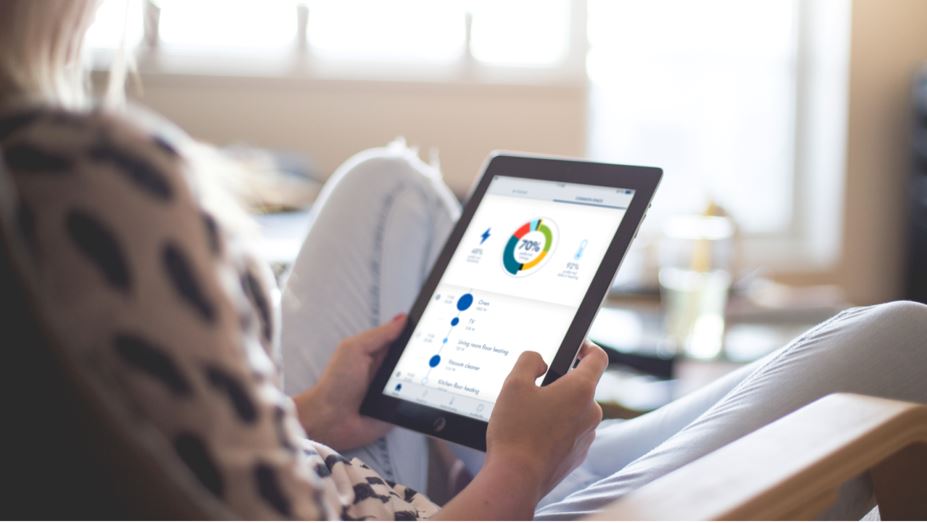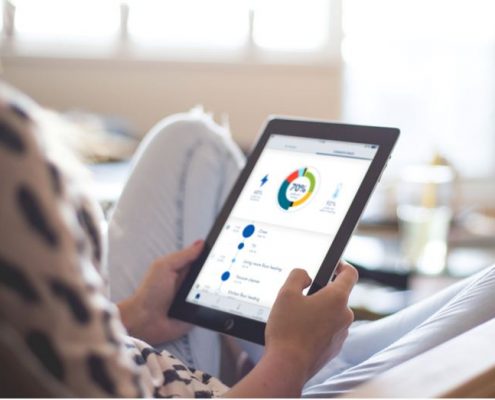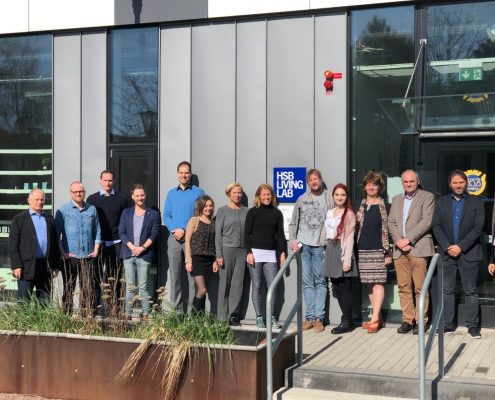FISMEP Project Meeting in Gothenburg
Consortium visits the HSB Living Lab at Chalmers University of Technology
Recently, the FISMEP project partners came together in Gothenburg, Sweden, for the first joint meeting since the project’s kick-off last December. Ulrike Rahe, Professor in Industrial Design at Chalmers‘ Department of Industrial and Materials Science, hosted the meeting and gave the consortium an inside look at the activities at the HSB Living Lab, one of the test sites for the Swedish field test.
The first half of the meeting day was dedicated to the HSB Living Lab and the overall test activities on the Swedish side. As a little reminder: The Field Test Sweden is concerned with the monitoring and analysing of energy consumption, aiming to investigate how customer behavior can interact with the system as a whole in order to create flexibility and optimal use of energy. In the context of the FISMEP platform, this test setting and its results are particularly valuable and important regarding the implementation of energy-related services with a special focus on customers‘ involvement.
What is the HSB Living Lab? It’s a unique residential building constructed and prepared for research purposes in the field of sustainable living. Located at the heart of Chalmers Campus Johanneberg, it can accommodate up to 40 students, guest researchers and doctoral students. There are other living labs around the world, but none where so many people are living permanently for such a long time. At HSB Living Lab, research is moving in with the residents who are living among measuring equipment. That way, they help develop accommodation of the future with a particular focus on energy management.
Chalmers has developed an app called “Energy Organiser (ERO)“, which is tested at the HSB Living Lab within the framework of their research activities. The app serves as a tool for energy consumption control and thus gives the researchers insights into the actual energy consumption of the residents at the living lab. Central to the app is the personal energy threshold (PET) which gives the residents an overview of their own energy consumption in their personal space. In this context, the ERO app allows them to plan and coordinate energy-dependent activities such as washing clothes or dishes, watching TV, using the kitchen oven as well as room heating. For this, the residents can choose between different personal energy sources (e.g. solar, wind, hydro, nuclear or fossil) which can be timed for use throughout the day, depending on their individual availability status. This end user involvement is supposed to motivate the residents to plan energy consumption activities in advance and thus to use their energy in a more efficient and sustainable way – all documented both in form of prognosis data going back to the suppliers as well as their individual consumption history.
In addition to Chalmer’s activities, E.ON Sverige also contributes to the Field Test Sweden. They have developed the smart grid platform “CESO“, which enables a digital connection of the customer to E.ON grids. The platform focuses on optimizing energy carriers‘ district heating, district cooling and electricity production and distribution. Following pilots and first advanced physical tests, CESO has proven to be a promising solution for both heating and cooling by using the thermal capacity of buildings to store energy.
CESO consists of a local gateway (Energy Manager) and central cloud-based system (Portfolio Manager) that communicate in order to optimize both the building as well as the system: The Energy Manager communicates with the building management system (BMS), which is still the master, through a Modbus interface. In order to be able to communicate with CESO, the installation requires an adaptation of the BMS.
In a situation where the heat demand is larger than the available heat production, CESO can prioritize certain building or functions, resulting in reduced investment need in redundant production and distribution capacity. CESO can prolong the use of a started production unit by reducing the demand upon reaching its current capacity limit. As a result, the need for switching to a more expensive fuel type can be reduced and short start and stop costs can be avoided. Lastly, CESO as an established platform and infrastructure can be of great interest for service solution providers but also act as a supplier to end customer solutions, enhancing relationships between customers and new business opportunities.
The activities within the Field Test Sweden fully correspond to Sweden’s remarkably forward attitude to energy sustainability and innovation. The City of Malmö, the third partner of the Swedish consortium, is already the world leader when it comes to developing the sustainable urban systems of the future. And they have big plans: by 2020, the Malmö city district Hyllie is supposed to be powered by 100% renewable and recycled energy and by 2040 all, of Sweden is set to be using 100% renewable electricity.
For the future course of the FISMEP project, it will be very interesting to see how the Swedish research and development activities will conjunct with the Romanian and German activities, particularly when it comes to the integration into the final cloud platform. Prof. Antonello Monti, project coordinator from RWTH Aachen University, explains: “Thanks to the rich set of use cases, all quite different from each other, FISMEP has the possibility to deeply understand what the data and API requirements of energy systems in the context of platform development are. Such an approach will allow an easy integration of the energy systems into other vertical businesses, enabling new type of business models. First of all, this integration makes a lot of sense at the house level and, in this respect, the experience from Sweden is particularly valuable for the project. The work performed in FISMEP is therefore a critical step in supporting a process of data standardization and interface that should happen at European level in the future.”
